#59: ‘Sans Soleil’: The Reveal discusses all 100 of Sight & Sound’s Greatest Films of All Time
Chris Marker's unclassifiable cinematic essay circles the world in search of wonders while pondering the nature of memory, history, and time.
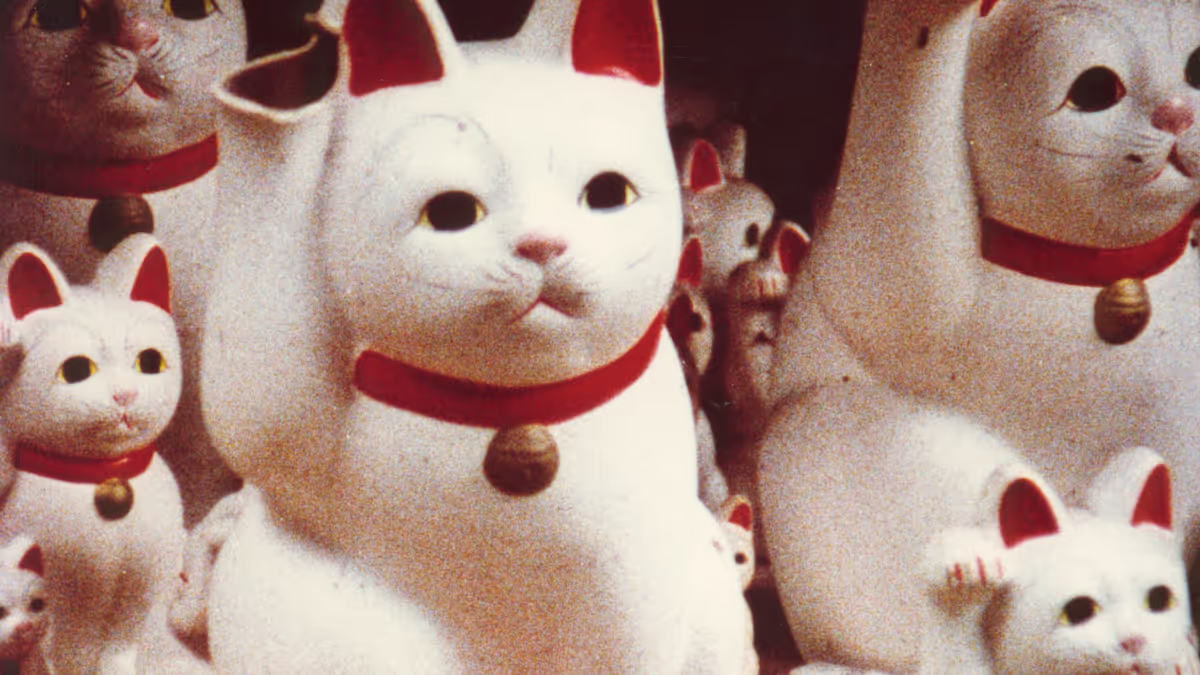
On December 1st, 2022, Sight & Sound magazine published “The Greatest Films of All Time,” a poll that’s been updated every 10 years since Bicycle Thieves topped the list in 1952. It is the closest thing movies have to a canon, with each edition reflecting the evolving taste of critics and changes in the culture at large. It’s also a nice checklist of essential cinema. Over the course of many weeks, months, and (likely) years, we’re running through the ranked list in reverse order and digging into the films as deep as we can. We hope you will take this journey with us.
Sans Soleil (1982)
Dir. Chris Marker
Ranking: #59
Previous ranking: #69 (2012)
Premise: Part documentary, part meditation on time and memory, and part sketchbook for a film that will never be made, Chris Marker’s 1982 film features footage shot in Japan, Iceland, San Francisco, Guinea-Bissau, Cape Verde, and elsewhere, all of it framed as recollections sent to the film’s narrator (Alexandra Stewart, in the film’s English-language version) by a filmmaker named Sandor Krasna. Krasna’s letters offer his observations on everything from the revolution that ended Portuguese rule in Guinea-Bissau to Japanese horror movies to the significance of a pair of dogs frolicking on the beach. Other topics include Alfred Hitchcock’s Vertigo, a science fiction film about a time traveler from the year 4001, and Krasna’s favorite animals: owls and cats, a fondness he shares with Marker.
Keith: Where to start with Sans Soleil? It’s tempting to call it an overwhelming experience. Marker throws out one challenging idea after another amidst a steady procession of arresting images, often accompanied by memorable quotes. (No stranger to the world of political activism, Marker has a gift for aphorisms. A favorite: “Who remembers all that? History throws its empty bottles out the window.” Another: “Video games are the first stage in the plan for machines to help the human race. The only plan that offers a future for intelligence.”) But Sans Soleil is anything but intimidating. It’s a film of serious ideas that features a handful of horrifying images, but there’s also a sense of lightness, sometimes playfulness, to it. In one scene, for instance, Marker cuts footage of dozing passengers on a Japanese train with images of horror movies. It beautifully captures the idea of movies being the visual realization of a culture’s collective unconscious in a way that no other art form could accomplish. But it’s also funny. I think Marker gets that, just as he understands that it’s possible to take seriously the film’s observations on loss and mourning and be amused by the scenes of extremely horny taxidermied animals in the sex museum that accompany them.
Sans Soleil takes its name from “Sunless,” a cycle of songs written by the Russian composer Modest Mussorgsky based on lyrics by the poet Arseny Golenishchev-Kutuzov (part of which also provides a portion of the film’s mostly electronic soundtrack). They’re mournful pieces with titles like “The Noisy Festival Day is Ended” that at least seem to touch on some of the same themes Marker covers. I’m sure there’s an essay to be written about the relationship between the two works, though I don’t have the expertise to do it.
The Reveal is a reader-supported newsletter dedicated to bringing you great essays, reviews and conversation about movies. While both free and paid subscriptions are available, please consider a paid subscription to support our long-term sustainability.
But I keep thinking that the term “sunless” might refer to movies themselves, which cannot be seen in sunlight. Sans Soleil opens with a shot of children in Iceland that Marker, err…, Krasna believes represents perfect happiness but laments he cannot find an appropriate image to pair with it. From the start, Sans Soleil doesn’t just let you know you’re watching a movie, it makes you think about how movies work, which undoubtedly had to be on Marker’s mind, too, as he made Sans Soleil using a silent camera and a primitive tape recorder. In one scene, Marker captures a woman meeting the camera’s gaze for the length of a single frame, which he then returns to later in a form altered visually by a friend who works in electronic images and sound. What does this mean?
I don’t know! But it seems significant. Scott, any thoughts? There’s a lot to talk about here, so I’ll hand it off to you with that question and then tee up a discussion about what initially feels like a digression. Sans Soleil travels the globe, but it mostly moves from Japan to Africa and back again several times. Yet Marker takes some side trips, including one to San Francisco to visit the locations used for Vertigo, a film Krasner has seen 19 times and describes thusly: “Only one film had been capable of portraying impossible memory, insane memory.” Does he make a good case for this? And what is Vertigo’s significance to the rest of the film?
Scott: Sans Soleil is “anything but intimidating”? Speak for yourself, my friend! Another word you use, “overwhelming,” is more apt in my view, and I think how you engage with the film is the determining factor on whether it’s intimidating to you or not. This is a film dense with visual and philosophical conceits that interact with each other at a speed that I don’t feel many can process in real time, though I suppose by “many,” I could just be referring to “me” and making assumptions about others. But I think the best way to approach Sans Soleil is to imagine yourself fishing in a stream of consciousness: You’re not going to catch everything that swims by you, but you can expect to reel in a few whoppers during the stretch of time that you watch it. And you may feel inclined to spend more time with it and pick up that much more.
An obvious point that has nonetheless struck me many times throughout this Sight & Sound poll project is that when you’re narrowing down a 125 years of cinema to 100 movies, you’re often encountering work that’s truly singular and influential. We saw that with our last entry, Daughters of the Dust, a landmark production from an African-American woman that opened cinema up to a new point-of-view and a style of filmmaking that feels almost sui generis. When watching Sans Soleil, my mind turned to a mode of poetic, essayistic nonfiction filmmaking that’s more common now at festivals like True/False, but didn’t have much precedent. The only films prior to Sans Soleil that come to mind as models are Alain Resnais classics like 1959’s Hiroshima, Mon Amour and 1961’s Last Year at Marienbad, which both use voiceover narration to explore all sorts of historical and philosophical subjects in ways that challenge (and often stymy) their audience. Marker marries Resnais’ approach to a highly personal and idiosyncratic form of documentary and seems to invent a new subgenre in the process.
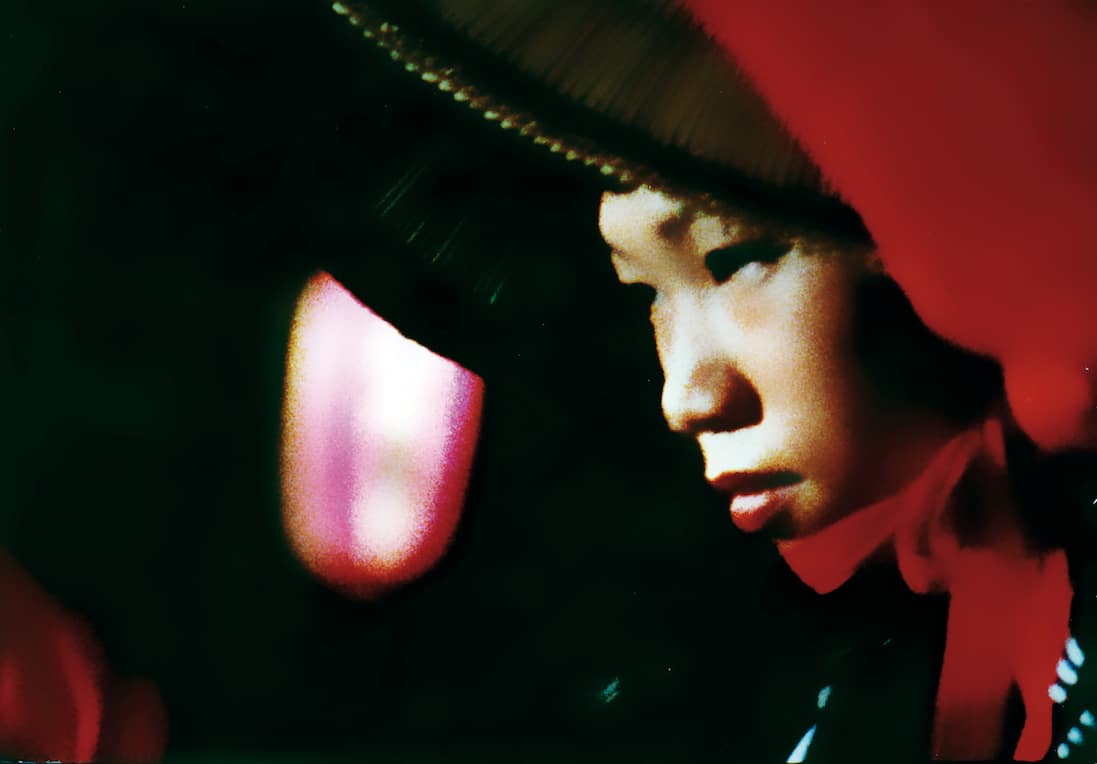
Yet I can see why you might not find it intimidating, because Marker’s tone is so playful and his images are so inviting. You’ve already mentioned my favorite sequence of the film, when Marker imagines the dreamworlds of various people sleeping on the train in Japan. It’s just one of countless examples where he’s captured real-life imagery and given himself the creative freedom to imagine scenarios around it or to manipulate or re-contextualize those images any way he chooses. Consider “The Zone,” his homage to the Andrei Tarkovsky film Stalker, which is about a guide who leads people through an otherworldly area where the laws of physics don’t apply. Marker’s “zone,” a computerized garble of images accompanied by an electronic score, seems to me an attempt to liberate cinema itself, particularly nonfiction cinema, from the aesthetic laws that we tend to apply to it.
As for the film’s Vertigo obsession? That’s a tough nut to crack, but then again, so is Vertigo. (As we’ll see about three and a years from now, when we’ll have nearly completed this project!) Hitchcock’s film is Marker’s favorite, and it’s a major influence on La Jetée, too, which we talked about when we covered that film late last year. With Vertigo, the phrase “impossible memory, insane memory” describes Scottie’s attempt to recreate a person and a moment that has been lost to him, a mad obsession that is nonetheless deeply romantic and identifiable. Memory is a primary theme in Sans Soleil, too, and you get several moments where Marker focuses on the impossibility of remembering things clearly or the outright obliteration of the past.
I’m thinking of a sequence where Marker is reflecting on the history of Okinawa after World War II, when it went through 27 years of American occupation before reverting to what he calls a “controversial Japanese sovereignty.” Marker observes this Ryukyuan ceremony involving a Noro priestess and refers to the “magic knowledge” of women and how he (or, um, “Sandor Krasna”) felt like he was witnessing the end of something. “Magical cultures that disappear leave traces to those who succeed them,” he says. “This one will leave none. The break in history has been too violent.” That’s a sobering thought, to say the least, but war does have the effect of accelerating changes and wiping out pieces of our culture and collective memories.
Marker seems stuck on those spirals in Vertigo’s titles, too, so kudos to Saul Bass for that. What do you think of the Vertigo connection, Keith? What other themes or sequences stood out for you? I’m also curious to hear your thoughts about how Marker’s Marxism figures into the film, particularly as it pertains to Guinea-Bissau and the legacy of Portuguese colonialism in that country.
Keith: It’s funny, Scott: I wanted to get into some possible precursors to Sans Soleil at some point in this conversation. I’m not surprised you beat me to it, but your picks aren’t what I had in mind (though I can definitely see those connections to Resnais). I think the closest work to Sans Soleil we’ve covered as part of this project (so far) is Godard’s Histoire(s) Du Cinéma, which similarly throws a lot of images and ideas at the viewer with a studied weariness and an intense sense of curiosity. I’m similarly tempted to dub Sans Soleil sui generis but maybe it’s Marker’s take on one of the most disreputable genres ever created: the mondo film.
Hear me out. I am not a crackpot. In 1962, the team of Gualtiero Jacopetti, Paolo Cavara, and Franco E. Prosperi released their film Mondo Cane, a documentary (using that term loosely) that traveled the world searching for colorful, bizarre, and disturbing practices. The film’s point of view is decidedly Eurocentric and the film alternates between exoticizing what it captures and treating it as shameful and primitive. A nudge-nudge, “Can you believe this tone?” underlies the whole project. Mondo Cane wasn’t just a big hit—though one that’s largely been erased from history—it prompted a flood of similar films, most of them even less tactful and more intent on shocking and disgusting viewers. The notorious 1978 film Faces of Death takes the genre to its logical conclusion.
To my eyes, Sans Soleil often plays like a mondo film with its polarity reversed. (And I thought I was alone in making this connection before discovering that Vincent Canby referenced it in his original New York Times review.) There are a few moments in Sans Soleil that wouldn’t be out of place in a mondo movie, particularly that grisly scene of a giraffe being hunted and killed, and shots of dead bodies. But rather than emphasizing the otherness of what it’s showing, Marker’s film seems interested in making us understand what we’re seeing, and in connecting it to what’s universal in the human experience, how the particularities of the place and time in which we live can shape that, and how whole ways of seeing the world can disappear.
The Okinawa sequence is a good example of this, but so is the depiction of the history of Guinea-Bissau. I’m no expert on Marker’s particular politics or on the currents of Marxism through which he swam in the ‘70s and ‘80s when making Sans Soleil. But I do know, in its most basic form, Marxism is predicated on the notion of revolution pushing history forward toward a perfect socialist state. Whatever Marker’s politics, they aren’t naive, and the depiction of Guinea-Bissau’s shifting leadership captures this via footage of toppled statues and smiling revolutionaries destined to turn on one another not long after the cameras stop filming. However little they resemble each other otherwise, both the revolution and the magic ceremonies provide frameworks for understanding the world, and both can be violently destroyed.
So what does that leave? I’m not sure Marker has an answer, but one possible answer, at least for him and for anyone who seeks out Sans Soleil, might be movies. Like La Jetée, Sans Soleil pays homage to Vertigo, but it also seems to turn “Krasna” into that film’s hero. Only instead of looking for a lost love, he’s seeking to find the film itself by visiting its locations. Some remain intact. Some have vanished. Some, like the Mission Dolores bell tower, never existed. Elsewhere, Krasna recalls the specific moments in which the footage we’re seeing was filmed with a kind of wistfulness that time has made unreachable. But in some ways, all of Sans Soleil plays like, to borrow a phrase from another French artist, a search for lost time, made with the understanding that any movie—be it Vertigo or a scene of an animatronic John F. Kennedy in a Tokyo department store—is a document of a lost world.
I feel like we could just endlessly go back and forth with “What do you make of this scene?” exchanges, but I’d love to hear your thoughts on the imagined science fiction film inspired by Iceland. My contribution: I’ve been to some of the places in Iceland shown in the film and they really do feel otherworldly, particularly those black sand beaches. I’ve also been to the island of Heimaey, a large portion of which disappeared under volcanic ash in the 1970s, which feels like a physical realization of some of Sans Soleil’s themes, doesn’t it?
Scott: First off, if I were asked in advance which film you’d be comparing to Sans Soleil, I’d be guessing for a lifetime before getting to Mondo Cane, so kudos for that. (Though I only know that film, its sequels, and Faces of Death by reputation, so perhaps I’d have made the same connection.) But I love your thought about Marker’s film being “like a mondo film with its polarity reversed,” because while we might be witnessing these foreign rituals from an anthropological distance, there’s a level of respect and engagement on Marker’s part that makes the film curious rather than merely emphasizing the exotic. (You have to imagine the late Anthony Bourdain was a fan.) And we learn more than once in the film that certain traditions, when faced with the violent forces of history, can be abruptly obliterated.
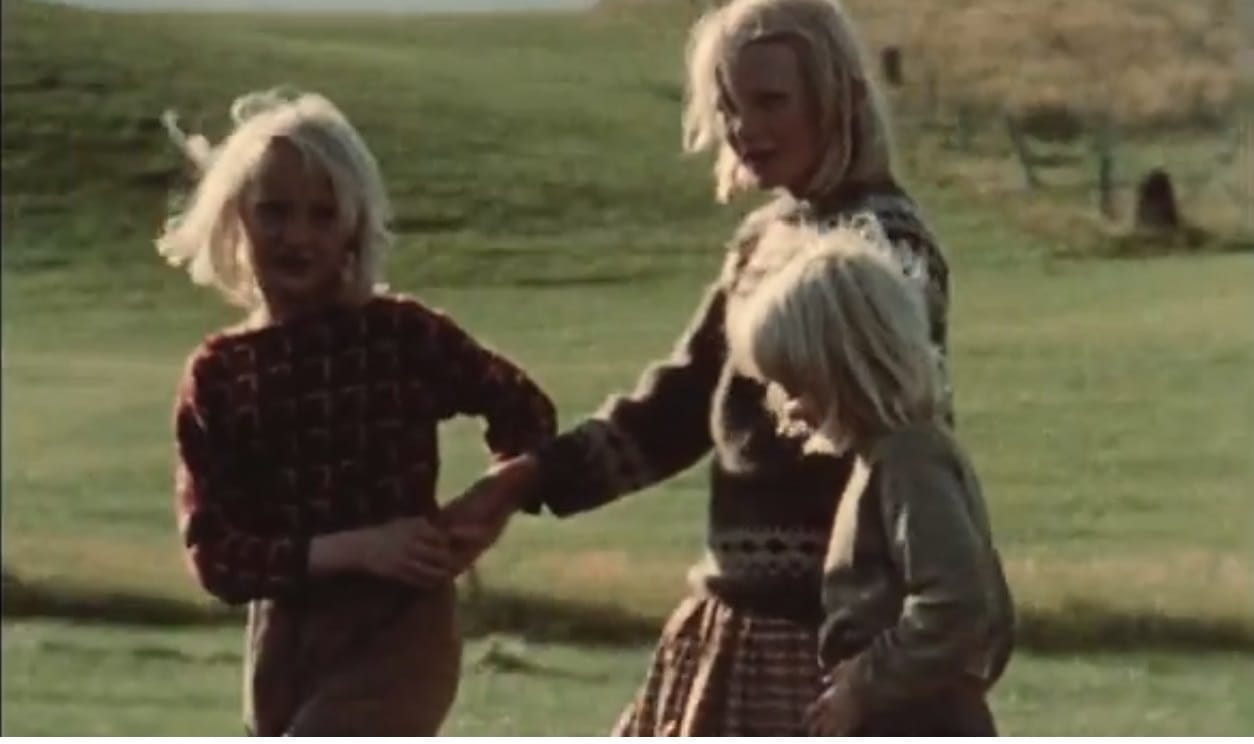
I’m glad you asked me about the Iceland footage, because it bookends the film, which tells you how important it was to Marker. Over the weekend, I was in Washington D.C. to do a panel and moderate a few screenings at the DC/DOX Film Festival, including David Osit’s Predators, which I'd raved about earlier this year, when it was my favorite film out of True/False. Predators is about the early-to-mid ‘00s Dateline NBC hit To Catch a Predator, a show that prided itself on luring would-be child-sex offenders to a house via a human “decoy” and then brought out the host, Chris Hansen, to snare them Candid Camera-style. One of the many revelations of Predators is how much the show relied on sticking to a narrow formula, because the moment viewers saw the full context of the event—whether it was the production’s unsavory (and legally inadmissible) relationship with the authorities or any signs of genuine vulnerability from the “predator”—the whole thing would fall apart. We needed to feel good about catching monsters.
That got me thinking of a great Martin Scorsese quote: “Cinema is a matter of what’s in the frame and what’s out.” Those are the choices that filmmakers have to make, and it gives them great powers of expression and deception. The first lines of Sans Soleil refer to those three children on the road in Iceland in 1965, which “Krasna” describes as “the image of happiness” and how he’d failed to link it to other images. The children were part of a larger, imagined science fiction project in a setting that American astronauts had used for training because of its resemblance to another planet’s landscape. But I think once you open up the frame beyond this instance of “happiness” that you’ve applied to it and see the children in another context, your feelings about the image completely shift. That’s cinema as Scorsese describes it.
Earlier in our discussion, I talked about Sans Soleil being a movie where you’re “fishing in a stream of consciousness,” so I wanted to wrap up by noting some moments that really caught my eye. Here are a few: The restaurant in Nishi-Nippori, Japan where the chef specializes in “action cooking,” an artful combination of ingredients that Krasna likens to “painting, philosophy and karate” all at once. The mesmerizing shots we get of television in Japan, where “the more you watch Japanese television, the more you feel like it's watching you.” The passage about how writing the Bible was a way that people remembered things before they could film, photograph, or tape them: “The new Bible will be an eternal magnetic tape of a time that will have to reread itself constantly just to know it existed.”
I don’t always know what to make of the film’s abstractions, which often went over my head, but Sans Soleil is such a satisfying drift through ideas and images. (Richard Linklater also has to be a fan, right?) Between the
travelogue beauty of the footage, which captures corners within corners of the world, and a soundtrack that mixes this philosophical narration with a cool electronic score, its surface pleasures are far more inviting than, say, Histoire(s) du Cinéma, which actively alienates viewers by design. The little tributaries Marker heads down can be profound and challenging, but I think what sticks with me about Sans Soleil is how surprising and even whimsical his essay can get. He loved cats and owls. He's so enthralled by a neighborhood celebration in Japan that he cuts the narration and just watches it unfold over a Moog soundtrack. He even imagines train nappers dreaming in cinema. What’s not to love about that?
We’re looking at an incredible logjam of great films tied at #54 for next time. But let’s go with the second of three (!) Billy Wilder movies on the Sight and Sound list, 1960’s The Apartment.
#95 (tie): Get Out
#95 (tie): The General
#95 (tie): Black Girl
#95 (tie): Tropical Malady
#95 (tie): Once Upon a Time in the West
#95 (tie): A Man Escaped
#90 (tie): Yi Yi
#90 (tie): Ugetsu
#90 (tie): The Earrings of Madame De…
#90 (tie): Parasite
#90 (tie): The Leopard
#88 (tie): The Shining
#88 (tie): Chungking Express
#85 (tie): Pierrot le Fou
#85 (tie): Blue Velvet
#85 (tie): The Spirit of the Beehive
#78 (tie): Histoire(s) du Cinéma
#78 (tie): A Matter of Life and Death
#78 (tie): Celine and Julie Go Boating
#78 (tie): Modern Times
#78 (tie): A Brighter Summer Day
#78 (tie): Sunset Boulevard
#78 (tie): Sátántangó
#75 (tie): Imitation of Life
#75 (tie): Spirited Away
#75 (tie): Sansho the Bailiff
#72 (tie): L’Avventura
#72 (tie): My Neighbor Totoro
#72 (tie): Journey to Italy
#67 (tie): Andrei Rublev
#67 (tie): The Gleaners and I
#67 (tie): The Red Shoes
#67 (tie): Metropolis
#67 (tie): La Jetée
#66: Touki Bouki
#63 (tie): The Third Man
#63 (tie): Goodfellas
#63 (tie): Casablanca
#60 (tie): Moonlight
#60 (tie): La Dolce Vita
#60 (tie): Daughters of the Dust
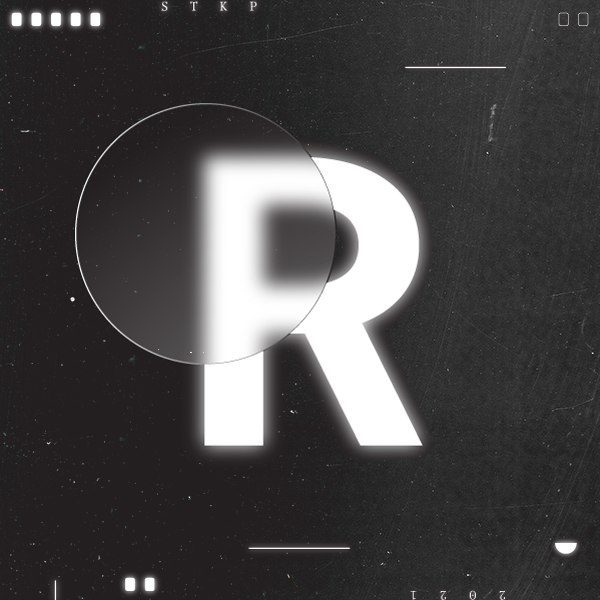
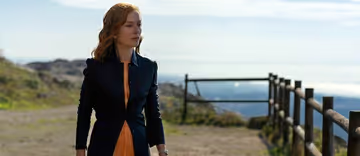


Discussion